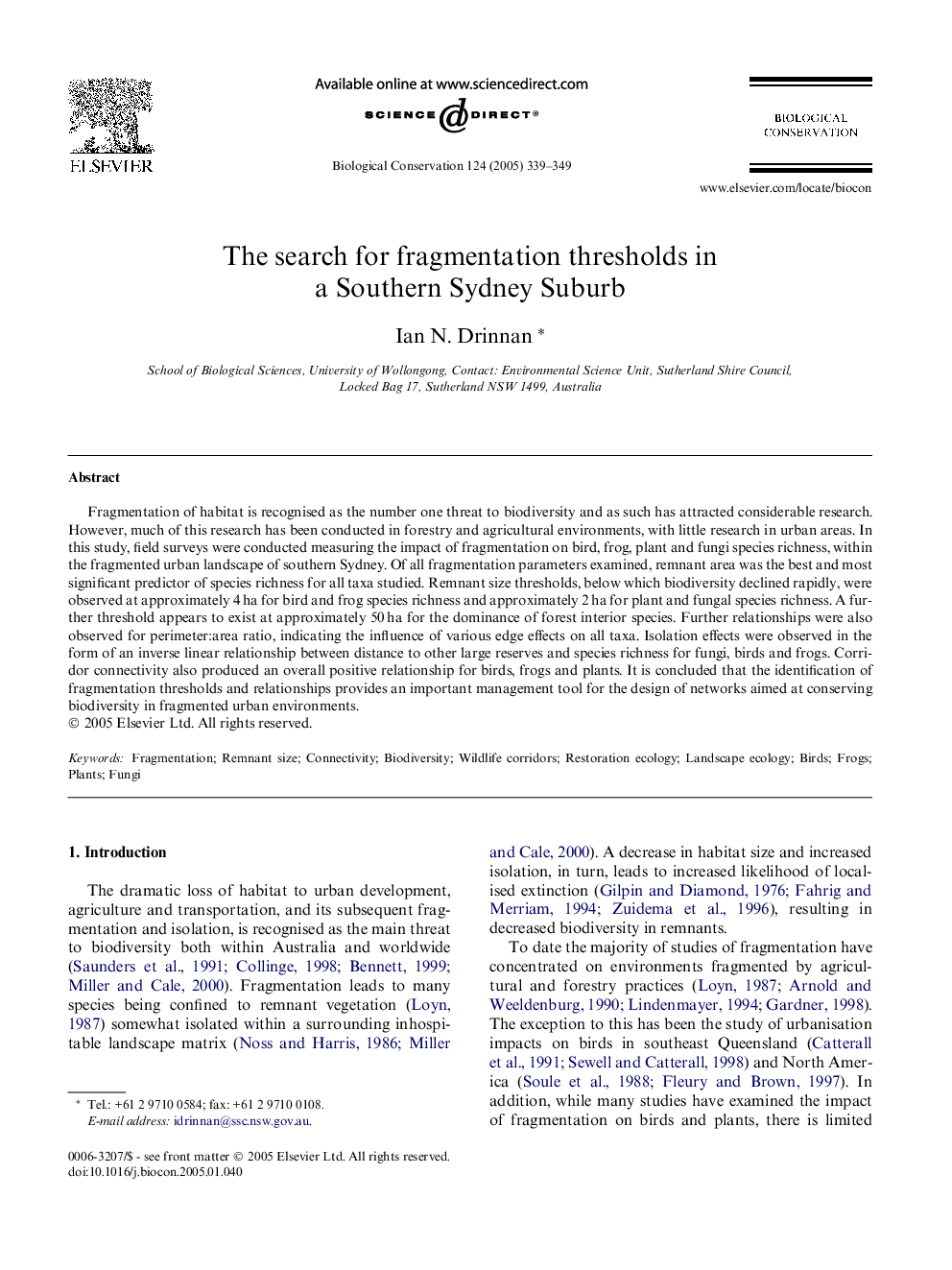| Article ID | Journal | Published Year | Pages | File Type |
|---|---|---|---|---|
| 9445923 | Biological Conservation | 2005 | 11 Pages |
Abstract
Fragmentation of habitat is recognised as the number one threat to biodiversity and as such has attracted considerable research. However, much of this research has been conducted in forestry and agricultural environments, with little research in urban areas. In this study, field surveys were conducted measuring the impact of fragmentation on bird, frog, plant and fungi species richness, within the fragmented urban landscape of southern Sydney. Of all fragmentation parameters examined, remnant area was the best and most significant predictor of species richness for all taxa studied. Remnant size thresholds, below which biodiversity declined rapidly, were observed at approximately 4Â ha for bird and frog species richness and approximately 2Â ha for plant and fungal species richness. A further threshold appears to exist at approximately 50Â ha for the dominance of forest interior species. Further relationships were also observed for perimeter:area ratio, indicating the influence of various edge effects on all taxa. Isolation effects were observed in the form of an inverse linear relationship between distance to other large reserves and species richness for fungi, birds and frogs. Corridor connectivity also produced an overall positive relationship for birds, frogs and plants. It is concluded that the identification of fragmentation thresholds and relationships provides an important management tool for the design of networks aimed at conserving biodiversity in fragmented urban environments.
Keywords
Related Topics
Life Sciences
Agricultural and Biological Sciences
Ecology, Evolution, Behavior and Systematics
Authors
Ian N. Drinnan,
